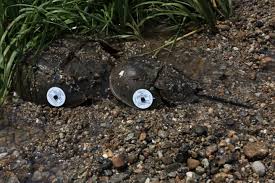Tagging Of Horseshoe Crabs:

The Zoological Survey of India and Odisha Forest Department have begun tagging horseshoe crabs to study their population, habitat, and migratory routes.
- Horseshoe Crabs are ancient marine arthropods, often referred to as “living fossils,” that inhabit shallow coastal waters with soft sandy or muddy bottoms.
- They are closely related to scorpions and spiders, not crabs, despite their name.
- These creatures spawn primarily on intertidal beaches during summer-spring high tides.
- Species of Horseshoe Crabs:
- American Horseshoe Crab (Limulus polyphemus): Found along the eastern coast of the USA and in the Gulf of Mexico; listed as Vulnerable by the IUCN.
- Tri-spine Horseshoe Crab (Tachypleus tridentatus): Endangered species found in the Indo-Pacific region.
- Coastal Horseshoe Crab (Tachypleus gigas): An Indo-Pacific species found in coastal waters of India, Southeast Asia, China, and Japan.
- Mangrove Horseshoe Crab (Carcinoscorpius rotundicauda): Found in the Sundarbans mangroves of West Bengal and other parts of the Indo-Pacific.
- India hosts two species: Tachypleus gigas and Carcinoscorpius rotundicauda. These species are predominantly found along the northeastern coast, particularly in Odisha and West Bengal.
- Conservation Status:
- Wildlife Protection Act, 1972 (India): Horseshoe crabs are listed under Schedule IV, offering them legal protection
- IUCN Red List: American Horseshoe Crab: Vulnerable
- Tri-spine Horseshoe Crab: Endangered
- Coastal and Mangrove Horseshoe Crabs: Currently listed as Data Deficient.




